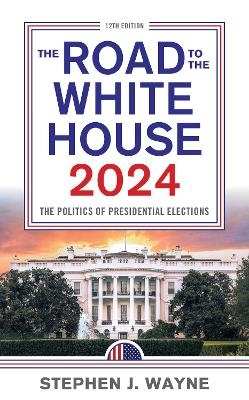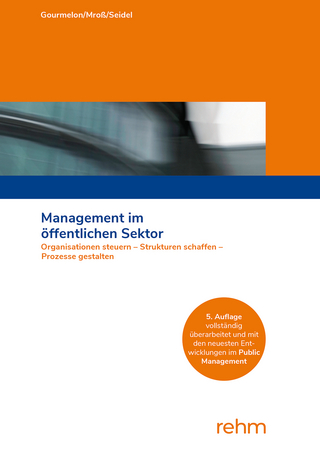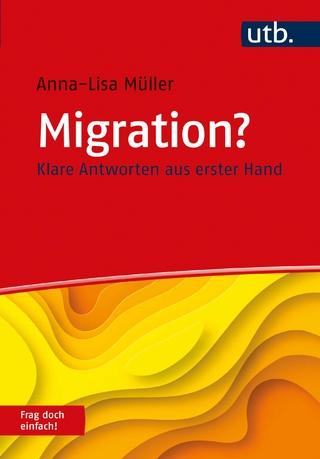
The Road to the White House 2024
Rowman & Littlefield (Verlag)
978-1-5381-8204-8 (ISBN)
Voters need information about the qualities of candidates, the policies they propose and the partisan labels they wear. Does our Electoral College encourage the most qualified candidates to run? Does it force them to talk candidly with the American people? Will election results accurately reflect the needs of the population as a whole? Wayne's The Road to the White House 2024 answers these questions in a straightforward, jargon-free manner. Equipping you with a background on presidential elections and a guide to the 2024 election, it illustrates the strengths and weaknesses of our electoral democracy. It also offers insights on changes that have revolutionized contemporary electoral politics: the flood of money, the ideological polarization of American parties, the digital revolution, foreign interference, voter eligibility, the integrity of the voting process itself and much more.
Stephen Wayne is an Emeritus Professor of Government at Georgetown University. He is a Washington insider who has written many books and articles on the presidency and presidential elections. A frequent source for journalists covering American politics, he often appears on television and radio news programs, conducts seminars for senior federal executives and international visitors, and lectures at many universities in the United States and abroad.
Part One. The Electoral Arena
Chapter 1. Presidential Selection: A Historical Overview
The Creation of the Electoral College
The Development of Nominating Systems
Congressional Caucuses
National Nominating Conventions
Popular Primaries and Caucuses
The Evolution of the General Election
Partisan Electors
Congressional Decisions
Judicial Determination
Other Close Elections
The Politics of Electoral College Voting
Summary
Where on the Web?
Exercises
Selected Readings
Chapter 2. Campaign Finance
The Rising Costs of Running for President
The Regulation of Campaign Finance
The Federal Election Campaign Act
The Buckley v. Valeo Decision
The Soft Money Loophole and Other Amendments
The Bipartisan Campaign Reform Act
The Court’s Citizens United Decision
The Money Explosion
Candidate Revenues
Federal Funds
Campaign Expenditures
Money and Electoral Success
Summary
Where on the Web?
Exercises
Selected Readings
Chapter 3. The Political Environment
Turnout
The Evolution of Voting in American Elections
Comparative Turnout in Other Countries
Influences on Turnout
Turnout and Democracy
Turnout and Partisanship
The Partisan Basis of Politics
Voting Behavior
Shifts in Partisanship
The Social Basis of Politics
The New Deal Realignment
Evolving Political Coalitions: 1950–70
Electoral Coalitions: The Last Forty Years
Summary
Where on the Web?
Exercises
Selected Readings
Part Two. The Nomination
Chapter 4. Party Rules and Their Impact
Reforming the Nomination Process: Democrats Take the Initiative
Fixing the Calendar
Improving Representation
Empowering the Leadership
Republican Reforms
Legality of Party Rules
The Impact of the Rule Changes
Turnout
Representation
Party Organization and Leadership
Winners and Losers
Summary
Where on the Web?
Exercises
Selected Readings
Chapter 5. Campaigning for the Nomination
Basic Strategic Guidelines
Plan Far Ahead
Concentrate Efforts in the Early Contests
Raise and Spend Big Bucks
Gain Media Attention
Develop an Organization
Monitor Public Opinion
Design and Target a Distinctive Image and Message
Make Effective Use of Communication Technologies
Coordinating Strategy with Candidacy Status
Campaigning as Front-Runner
Campaigning as a Non-Front-Runner
Campaigning as a Pulpit Candidate
Summary
Where on the Web?
Exercises
Selected Readings
Chapter 6. The Post-Primary Campaign
The Noncompetitive Preconvention Phase
Healing Partisan Discord
Repositioning and Reprioritizing the Issues
Repairing Leadership Images
Gaining the Stature of an Incumbent
Picking the Vice Presidential Nominee
Planning for the Convention
Convention Controversies in Historical Perspective
Contemporary Conventions: Composition, Content, Communications, and Impact
Oratory
Themes
Platform
News Media Coverage
Assessing the Conventions’ Impact on the Electorate
Characteristics of the Nominees
Summary
Where on the Web?
Exercises
Selected Readings
Part Three. The General Election Campaign
Chapter 7. Strategy, Tactics, and Operations
The Evolution of Presidential Campaigns
From Porch to Train
From Rally to Radio and Television
From Art to Science: The Digital Revolution
Strategic Planning
Partisanship
Salient Issues
Leadership Imagery
Dealing with Incumbency
Building a Winning Electoral College Coalition
Strategic Execution
Organization
The Public Dimension
Field Offices
Data Analysis
Summary
Where on the Web?
Exercises
Selected Readings
Chapter 8. Media Politics
The Mass Media and Electoral Politics: An Overview
Print Media
Television
The Internet
Traditional News Coverage
Horse Race Journalism
Newsworthiness: Bad News Is “Good” News
Story Lines
Impact
Presidential Debates
History
Preparation
Impact
Campaign Advertising
Format and Tone
Emotive Content
Accuracy and Truthfulness
Digital Communication Controversies
Foreign Interference
Use and Abuse of Personal Data
Summary
Where on the Web?
Exercises
Selected Readings
Part Four. The Election: Its Meaning and Consequences
Chapter 9. Understanding Presidential Elections
Predicting Presidential Elections
Forecasting Models
Pre-election Polling
Election-Night Reporting and Analyses of Exit Polls
Interpreting the Election Results
Models of Voting Behavior
Explaining Presidential Election Results: 1952–2016
Converting Electoral Choice into Public Policy
The President’s Imprecise Mandate
Campaign Expectations and Presidential Performance
Transitioning into Office
Summary
Where on the Web?
Exercises
Selected Readings
Chapter 10. Reforming the Electoral System
Improving the Selection Process
Party Rules
Campaign Finance
Informing the Electorate
Traditional News Coverage
Digital Communications
Democratizing the Road to the White House
Closing the Participation Divide
Changing the Way Presidents Are Elected
Increasing Competitiveness for Congressional Elections
Summary
Where on the Web?
Exercises
Selected Readings
Appendix. The 2019–2020 Presidential Election Campaign
| Erscheinungsdatum | 11.07.2023 |
|---|---|
| Verlagsort | Lanham, MD |
| Sprache | englisch |
| Maße | 153 x 224 mm |
| Gewicht | 395 g |
| Themenwelt | Sozialwissenschaften ► Politik / Verwaltung ► Staat / Verwaltung |
| ISBN-10 | 1-5381-8204-1 / 1538182041 |
| ISBN-13 | 978-1-5381-8204-8 / 9781538182048 |
| Zustand | Neuware |
| Informationen gemäß Produktsicherheitsverordnung (GPSR) | |
| Haben Sie eine Frage zum Produkt? |
aus dem Bereich


